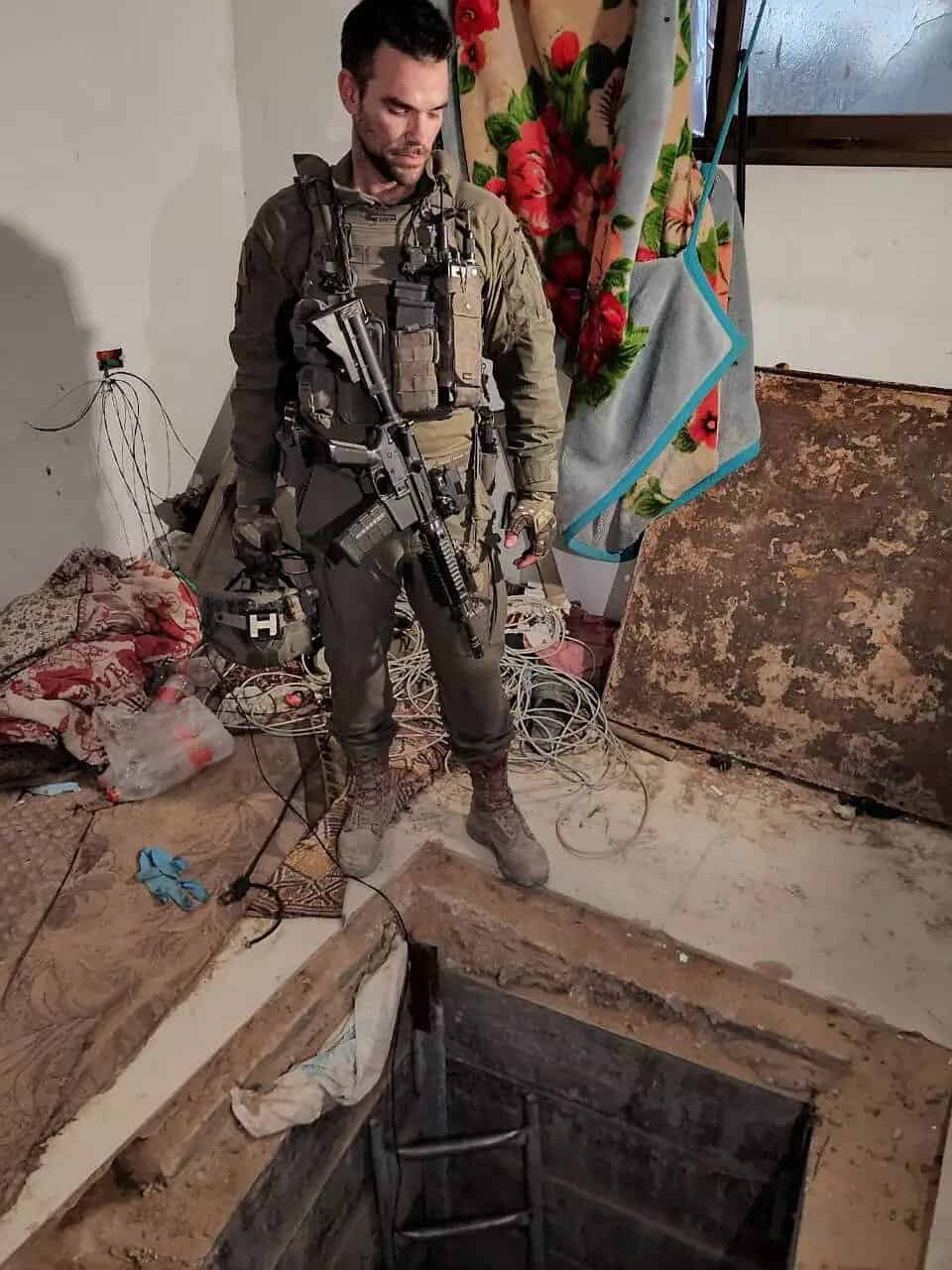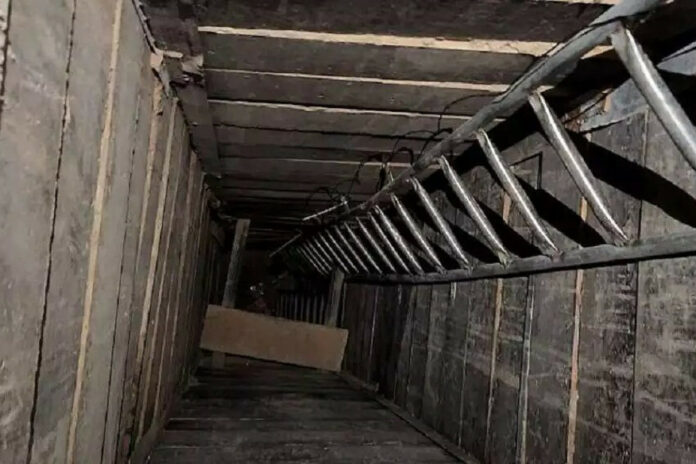(JNS) – The scene could be straight out of a movie, one even the world’s finest director would struggle to recreate. In the narrow alleyway stands a frozen, angry-eyed gray cat, refusing to budge despite the gunfire, thunderous explosions, and commotion of soldiers. Behind it, a child’s blue bicycle and a wheelchair peek out from the rubble—a grim reminder of the lives upended.
Join our WhatsApp groupSubscribe to our Daily Roundup Email
“That cat has been there for days,” notes one soldier. “I can only imagine what it witnessed to leave it so petrified.”
The entrance, like many others in Gaza, is not the original door but a new opening blasted through the wall by Israeli forces. To enter, one must step over two dusty purple mattresses, turn right into the living room, and veer left into the first bedroom— where it lies: a sunken, square pit in the center of the tiled floor leading straight to hell.
It was in this 10-meter-deep pit opening into a tunnel that the bodies were hidden before being recovered last week in a daring overnight operation by the Paratroopers Brigade’s 202nd “Viper” Battalion.
“We didn’t know there was a pit there,” says Lt. Col. Almog Rotem, the battalion commander, standing above the pit in the dimly lit room. “The one who found it was Team Leader Staff Sgt. Roy Beit Yaakov, may his memory be for a blessing.

A senior Yahalom officer who descended into the pit shared with Israel Hayom, “After our explosive ordnance disposal teams cleared the area around the pit, we entered the underground passage. Our mission was to locate and engage the enemy; we didn’t know there were hostages inside.
“We fought our way through, conducting excavations at suspected points, and that’s when we came across the bodies. We couldn’t be certain they were captives, but we were highly optimistic these were our men.
“Nothing can prepare you for the moment you’re told those are four captive bodies. It’s an immense privilege. We’re committed to doing everything in our power to hunt down Hamas’s tunnels and bring all our hostages home.”
Two days after the 202nd Battalion’s achievement in recovering the bodies, a “friendly-fire” incident occurred when a tank fired on a building where the soldiers were positioned, killing five. Separately, a company commander from the battalion, Maj. Gal Shabbat, succumbed to wounds suffered in battle with Gazan terrorists on May 15
“This was a severe event that should never have happened but did. We’re in a grueling, challenging war. We fight shoulder-to-shoulder with our Armored Corps brethren and embrace them; throughout this war, their actions have saved dozens of soldiers’ lives. My heart goes out to the families of the fallen; we will embrace them and push forward to complete the mission.
“I fight side-by-side with my troops; they possess remarkable mental and personal fortitude. They endure harsh experiences, but I see a glimmer in their eyes, their dedication, how they attack and never stop. Not a single soldier has said, ‘I don’t want to continue.’”
Grueling urban warfare
The battle in Jabalia’s camp is extraordinarily challenging. The narrow alleys are impassable for tanks, traversable only by infantry. Hamas had months to prepare, rigging every area with explosives.
Rotem gestures towards the combat zones: “This is a grueling urban warfare scenario; you confront the enemy face-to-face at short ranges in a dense environment. Our troops possess extraordinary capabilities and skills.”
Amid the cramped alleys lingers a putrid stench of rot and death—slain terrorists buried under the rubble during the fighting, Rotem explains grimly.
“It’s the smell of war. The enemy has honeycombed buildings with passageways, trapped courtyards and houses, and remotely triggered explosives. There’s not a single house here where we haven’t found at least five explosive devices—one at the entrance, another in the yard on the exit, and so on. Thankfully, we have techniques and training to neutralize these threats. We approach from unexpected angles and annihilate the enemy. Hamas terrorists have crumbled before the IDF’s might.
“We managed to recover four bodies of captives, a significant achievement. None are prouder than us to have brought them to burial in Israel.
“It’s saddening to find a captive’s body instead of a living person who could return to their families, but knowing there are four Israeli families who endured eight months of agonizing uncertainty, and that we could provide them a modicum of solace amid this nightmare—it’s a good feeling. We will continue risking our lives to defend the state and its citizens, in complex terrain conditions, for as long as it takes to restore security for the people of Israel and recover our captives.”
Rotem has a message for the media covering the war: “We are carrying out our missions, so be sure to tell the story of our troops to the people of Israel. They are fighting like lions in these alleys, under constant threat. They are heroes. This is not a simple war, but there have been remarkable operations that have achieved tremendous success. Tell their story.”
Originally published by Israel Hayom.

